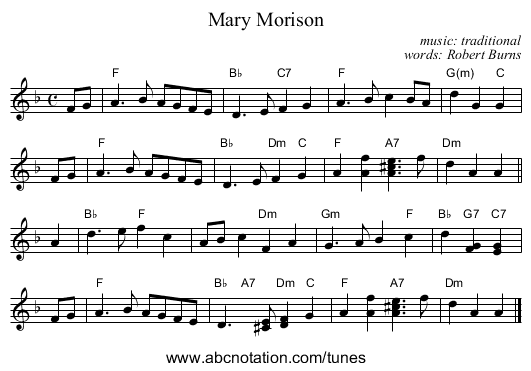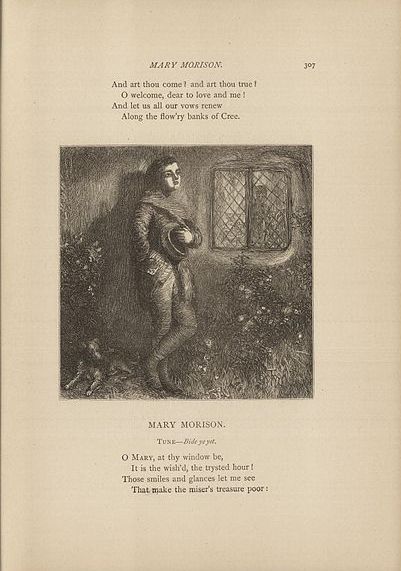The great eighteenth-century poet Robert Burns had written many poems in Scottish that have become calibrated. Sometimes he is called a nationalistic poet because through his works he portrays the country.
‘Mary Morison’ is also a very famous poem but it never portrays the country Scotland. The mixture of English and Scottish would catch the eyes of the readers.
Table of Contents
Summary
This is a small poem that begins with an image. Mary is there beside her window and the poet is calling her ‘O Mary’. Now the poet is saying this is a trusted hour and also a blessing hour.
He wants to see the smiles and the glances probably through the window. These all make the treasure poor. This is the way where the poet is describing nature.
“How blythely wad I bide the stoure,
A weary slave frae sun to sun,
Could I the rich reward secure,
The lovely Mary Morison.”
Here, the poet is saying how careless or cheerful he is who stays at a battle for no reason and a weary slave goes from sun to sun. Maybe he is addressing his struggle of finding the ultimate light.
Then he utters that could he be rich by staying secure at his place. This is a kind of question though Burns did not use any question marks. This question is to lovely Mary Morison.

The next stanza begins with another image. Yesterday when the trembling string was dancing and the light that was going through the lighted joy this was a joy to Mary because she was enjoying the event.
At that time poet’s fancy hands took as the wings. He then sat at a place but neither he heard nor he saw a word. Though this was fair but also a bit messy.
Then you have to taste the town this is probably the words of Mary Morison. They the poet shed among all the people who were present at that event.
“Ye are na Mary Morison.”
This is the last line of the second stanza which was written in Scottish and dedicated to Mary Morison. In the next stanza, the poet further utters that can she destroy the peace of mind for that she can gladly die.
Here, he raises a question that is can she break the heart of the lover who made a mistake by loving you or Mary Morison? If the love for getting love is not a pang of guilt then at least she is needed to show some pity on the person.

The poet also asks for that pity because he also loved Mary Morison which seems like a mistake. A gentle though can take the form of Mary Morison as the poet loves her. This is how the poet expresses her love for the person whom he may not get.
Analysis
The poem is having a short type of explanation regarding love. Here, the poet talks about Mary Morison who he loved but she never gave up attention to the poet. This poem is expressing the poet’s feelings and never gets accepted.
He loved her smile at a glance. Her smile, and looking are compared with the slave’s light of life. But then the poet is letting the readers know that she never gives an echo on his approach. This is how love has been destructed.
Theme
Love is the central theme of the poem that plays a big role in the poem. Throughout the poem, Robert Burns is describing his love for Mary Morison who even did not make respond to it.
One another theme that comes is the sorrow of not being appreciated by the lover. Poet is also shown sorrow for being ignorant.
Literary Devices
Literary devices or Rhetorical devices are like the jewellery that used to be put on to make the much recognizable. Here, Robert Burns also follows the steps of other poets.
Poet also uses a rhyming pattern called ‘ababcdcd’. Here the poet also uses other devices like Syncope, alliteration, imagery, etc.
Syncope is the relevant device that means a style of writing words where an apostrophe is being used like, “wish’d”, “miser’s”, “sigh’d”, etc.
Then comes Alliteration where a single sound is repeated more than one time in a single line like,
“sigh’d, and said”
And,
“toast of a’ the town,”
Here, the ‘s’ sound and ‘t’ sound are repeated.
Symbolism is also a relevant device in case this poem. Robert Burns writes a line,
“weary slave frae sun to sun,”
This line is a symbol of finding the ultimate light of the poem.
In this poem, Burns here used Elizabethan words like ‘thee’, ‘thou’. These words are used in Shakespearean works. These are the device that plays an important role.
